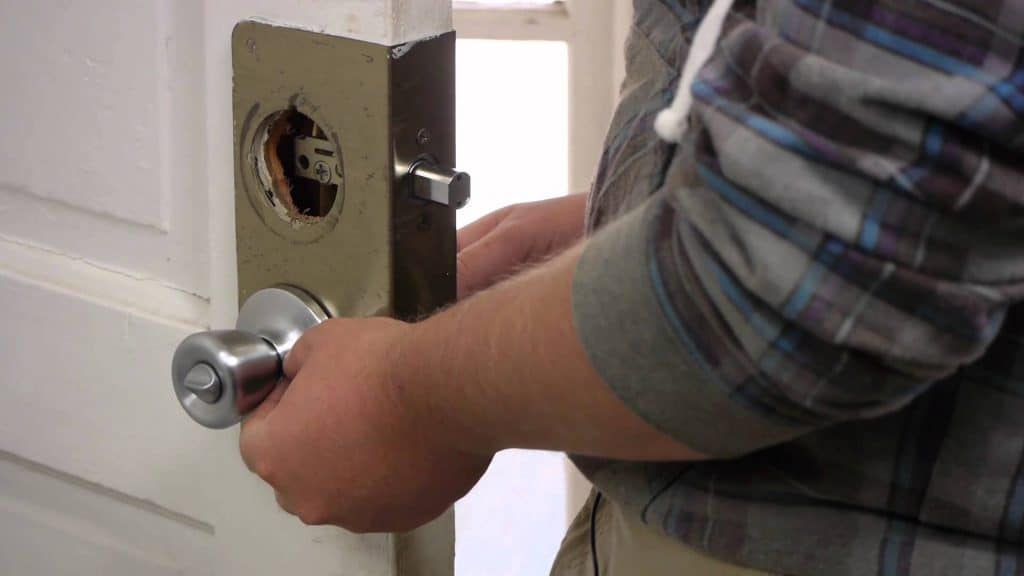Door lock installation is an essential aspect of home security. In this comprehensive guide, we will delve into the world of door locks, exploring various types and their functions, and provide you with a step-by-step guide to installing door locks.
Whether you are a homeowner looking to enhance your security or a novice locksmith, this article will equip you with the necessary knowledge and skills to tackle any door lock installation project.
Understanding Door Locks
Mechanical Locks
Mechanical locks are traditional locks that operate without the use of electricity. They rely on a physical mechanism, such as a key or a combination, to unlock the door. There are several types of mechanical locks, including:
- Deadbolts: Deadbolts are the most common type of mechanical lock used in residential properties. They provide a high level of security and are available in single-cylinder, double-cylinder, and lockable thumb turn variants.
- Mortise Locks: Mortise locks are installed within a cavity in the door, providing a clean and secure locking mechanism. These locks are commonly used in commercial settings.
- Knob and Lever Locks: Knob and lever locks are used in conjunction with a latch and are typically installed on interior doors for privacy purposes.
- Padlocks: Padlocks are portable and versatile, making them suitable for securing gates, sheds, and other outdoor structures.
Electronic Locks
Electronic locks use an electrical current to control the locking mechanism. They typically feature a numeric keypad, touchscreen, or RFID reader for keyless entry. Electronic locks are popular in commercial settings due to their ability to restrict access and monitor user activity. Some common types of electronic locks include:
- Keypad Locks: Keypad locks require a user to enter a code to unlock the door. This code can be changed as needed, providing a high level of access control.
- RFID Locks: RFID locks use radio frequency identification technology to grant access. Users must present an RFID card or fob to the lock’s reader to unlock the door.
- Biometric Locks: Biometric locks use unique physiological characteristics, such as fingerprints or facial recognition, to identify and grant access to authorised users.
Smart Locks
Smart locks are a subset of electronic locks that can be controlled and monitored remotely using a smartphone, tablet, or computer. These locks often integrate with home automation systems and provide additional features, such as remote locking and unlocking, access scheduling, and usage tracking. Some popular types of smart locks include:
- Bluetooth Smart Locks: These locks use Bluetooth technology to communicate with your smartphone, allowing you to lock and unlock the door without the need for a physical key.
- Wi-Fi Smart Locks: Wi-Fi smart locks connect to your home’s wireless network, enabling you to control and monitor your lock from anywhere with an internet connection. These locks often offer additional features, such as integration with voice assistants like Amazon Alexa or Google Assistant.
- Z-Wave Smart Locks: Z-Wave smart locks use Z-Wave wireless technology to communicate with other smart devices in your home, allowing for seamless integration with home automation systems.
Selecting the Right Door Lock
Security Ratings
When choosing a door lock, it’s important to consider its security rating. In the UK, the British Standards Institution (BSI) sets the standards for lock security. Look for locks with a British Standard Kitemark (BSI Kitemark) and a three-star rating, indicating the highest level of security. Additionally, you may want to consider locks that meet the requirements of Secured by Design (SBD), a UK police initiative that promotes high-security standards.
Types of Doors
The type of door you have will influence the type of lock you can install. For instance, uPVC doors typically require multi-point locking systems, while wooden doors can accommodate a wider range of lock types, such as deadbolts and mortise locks.
Lock Types
Select a lock type based on your security needs and door type. Deadbolts are recommended for external doors, while knob and lever locks are suitable for interior doors. If you’re looking for additional convenience and control, consider electronic or smart locks.
Budget
Finally, consider your budget when selecting a door lock. Mechanical locks are generally more affordable than electronic or smart locks, but they may not offer the same level of convenience or access control.
Installation Process
Tools and Materials
To install a door lock, you’ll need the following tools and materials:
- Measuring tape
- Pencil
- Drill and drill bits
- Hole saw
- Chisel and hammer
- Screwdriver
- Lockset or deadbolt kit
- Strike plate and screws
Step-by-Step Guide
- Measure and mark: Measure the door’s thickness and the distance from the edge of the door to the centre of the lock hole. Mark these measurements on the door.
- Drill the lock hole: Using a hole saw, drill a hole through the door at the marked location. Be sure to keep the drill level and straight to ensure a clean cut.
- Drill the latch hole: Drill a hole into the edge of the door where the latch will be installed. This hole should be perpendicular to the lock hole and deep enough to accommodate the entire latch.
- Chisel the latch plate recess: Use a chisel and hammer to create a recess in the door edge for the latch plate. The recess should be deep enough for the latch plate to sit flush with the door edge.
- Install the latch: Insert the latch into the latch hole and secure it with screws. Ensure that the latch is properly aligned and moves freely.
- Install the lock: Insert the lockset or deadbolt into the lock hole, making sure the spindle passes through the latch mechanism. Attach the interior and exterior components of the lock using the provided screws.
- Mark and chisel the strike plate recess: Close the door and mark the position of the latch on the door frame. Chisel a recess for the strike plate and drill a hole for the latch to enter when the door is closed.
- Install the strike plate: Secure the strike plate to the door frame using the provided screws.
Maintaining Your Door Lock
Lubrication
To ensure smooth operation and prolong the life of your door lock, lubricate the lock mechanism at least once a year. Use a graphite-based lubricant for mechanical locks and a silicone-based lubricant for electronic and smart locks.
Avoid using oil-based lubricants, as they can attract dirt and cause the lock to malfunction.
Inspect and Adjust
Periodically inspect your door lock for signs of wear and tear, loose components, or misalignment. Tighten any loose screws and adjust the latch or strike plate as needed to ensure proper function.
Rekey or Replace
If you lose your keys or experience a security breach, consider rekeying or replacing your door lock. Rekeying involves changing the internal components of the lock so that it works with a new key, while replacing the lock involves installing a completely new lockset or deadbolt.
If your lock is showing signs of wear or is no longer functioning correctly, it may be time to replace it with a more secure option.
Conclusion
Door lock installation is an essential aspect of home security. By understanding the different types of locks, selecting the right lock for your needs, and properly installing and maintaining your lock, you can enhance the security of your home and protect your belongings and loved ones.
This comprehensive guide has provided you with the knowledge and tools necessary to confidently tackle any door lock installation project. So, go ahead and secure your home with the perfect door lock that suits your needs and preferences.

